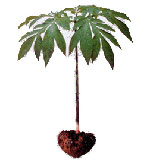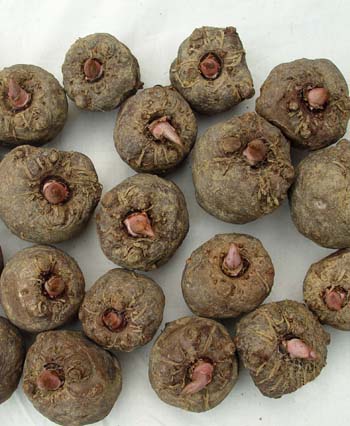What is the Konjac plant?
The Konjac plant belongs to the genus Amorphophallus. The botanical
name of the plant is Amorphophallus Konjac.
With a diameter of around 8 inches (20cm), the Konjac plant grows as
a root also known as Konjac tubes. While considered a type of perennial
plant, the Konjac plant can live for up to 5 years. Within the plant
the glucomannan fiber can be found, responsible for the high fiber/
zero calorie nutrition of Konjac foods.
Generally the Konjac plant is grown on steep mountainous regions
with warm weather at altitudes of 800 to 1,500 meters (2,400 to 4,500
feet). A typical harvest yields around 1000kg per hectare after 3-5
years of growth. Konjac plants are mainly produced in the tropical
and subtropical zones of the Eastern Hemisphere. The highest area
of production is in the mountains of South West China, the same region
native to panda bears. The
average temperature of the growth region is about 16 ? (60F).
Fresh Konjac root is a type of tuber, similar to yam and taro but
oval in shape.
The main constituent of the Konjac plant is the glucomannan fiber.
The amount of glucomannan fiber reaches its maximum after three years
of growth. Konjac is the only plant which can produce massive amounts
of glucomannan fiber. When the Konjac root is dried approximately
40% to 60% of the dried powder is glucomannan fiber.







